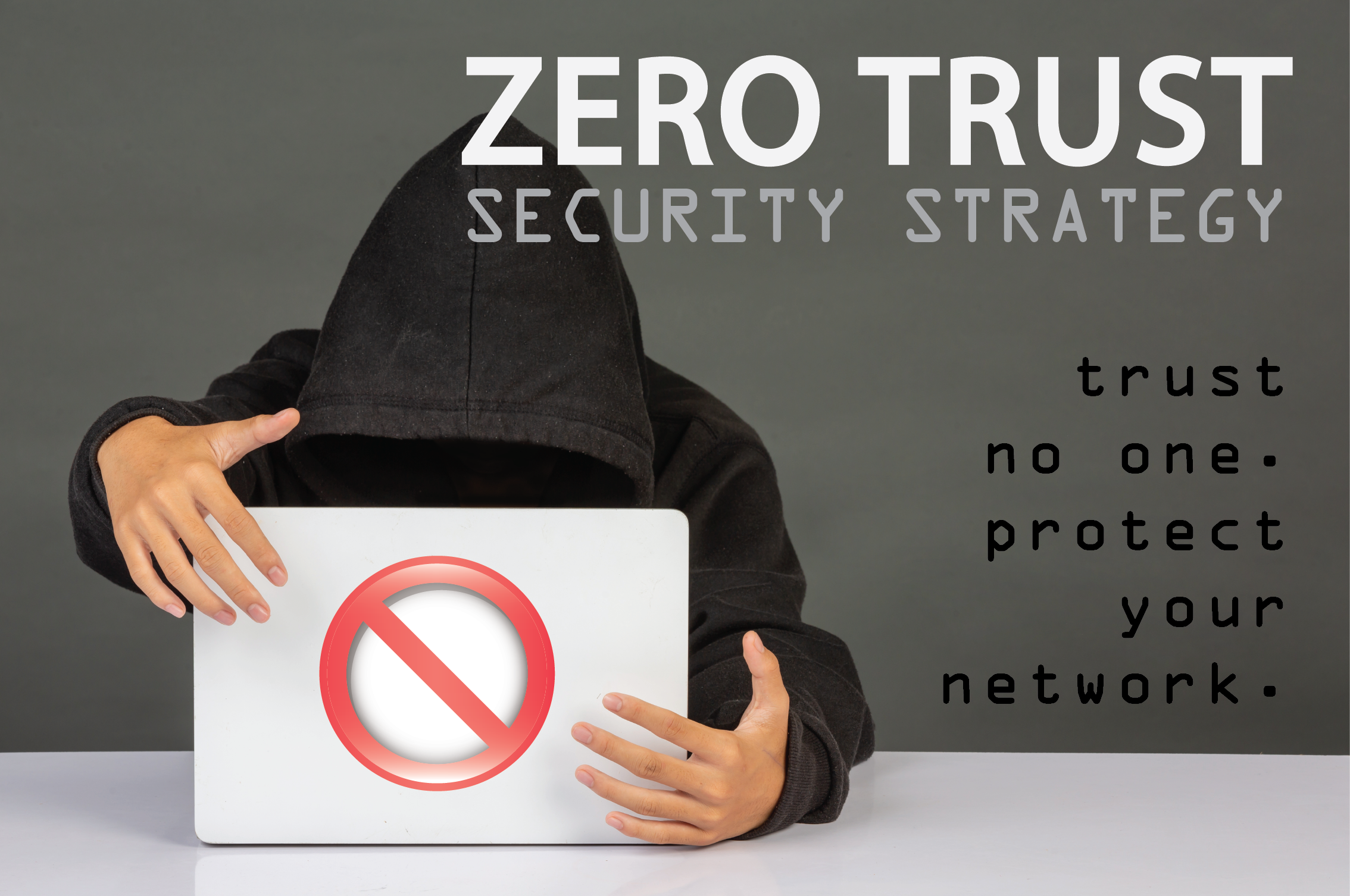What exactly is a Zero Trust security strategy? In general, this strategy simply means that not one person is trusted by default to access your secured network – no matter how high up they may be in the company – secured verification is required 24/7 in order to gain any access whatsoever on the network. This is a “trust no one” type approach and it has been believed to add an extra safety layer of protection to prevent data breaches and cyber-attacks. In our opinion, all companies should be operating with a Zero Trust security strategy because our motto is always better to be safe than sorry.
We’re seeing an upward trend of companies adapting to this strategy especially now due to COVID and the rise of work-from-home employees. It’s forcing companies to tighten up their security as a whole not just because their employees are connecting to the network outside of the office, but also because the risk threat is growing by the day due to all the global occurrences such as COVID and the BLM movement. Now is not the time to be lax when choosing a security route for your company.
How can you and your company begin shifting to a Zero Trust security strategy? Unfortunately, it’s not a flip of the switch or an overnight occurrence. It takes practice, effort, determination, and consistency and may take up to a couple of years before you’ve completely overhauled your network. Don’t beat yourself up if it doesn’t take off immediately – these things take time and patience and trust us, it’s worth it!
Here are a few ideas to help you get started in the right direction:
- An organization-wide commitment must be adopted – this means all departments, all employees and anyone who may be accessing your network – it’s an “all hands on deck” type of scenario
- All IT and data assets must be cataloged and assigned access rights based upon specific roles. For example, web servers should never be granted access to talk directly to other web servers. They should only be permitted to communicate with application servers through specific ports.
- All data must be classified such as trade secrets, fiscal information, and any proprietary data that need multiple levels of authentication by restricted and specified users.
- Make sure that all networks are segmented to prohibit “lateral movement.” Lateral movement is a technique used by cybercriminals to progressively move through your network as they search for key data and assets that they need to carry out their targeted attack. Files must be isolated from each other as they move across virtual machines and/or cloud servers.
- Implementing MFA (multifactor authentication) is vital! This is a secondary layer of password protection when accessing any domain or network. MFA uses a range of authentication from hardware devices to codes texted to a cell phone.
- Also implementing software-defined networking (SDN), which is the network management of moving out of the physical firewalls and switching to software. And identity and access management (IAM), that enforces authentication policies defined by your specific organization – this allows users to login in once to reach most of their applications or work stations and relieving them of having to track multiple passwords and login credentials.
Again, these efforts won’t happen overnight, and you must be diligent in practicing and maintaining your security efforts. Fortunately, just having a Zero Trust model alone will give you one less thing to worry about. If you have any questions or need help getting started, contact us at TechGuard or take advantage of our complimentary one-hour advisory services. We’re always here to help and evaluate your cybersecurity needs.





